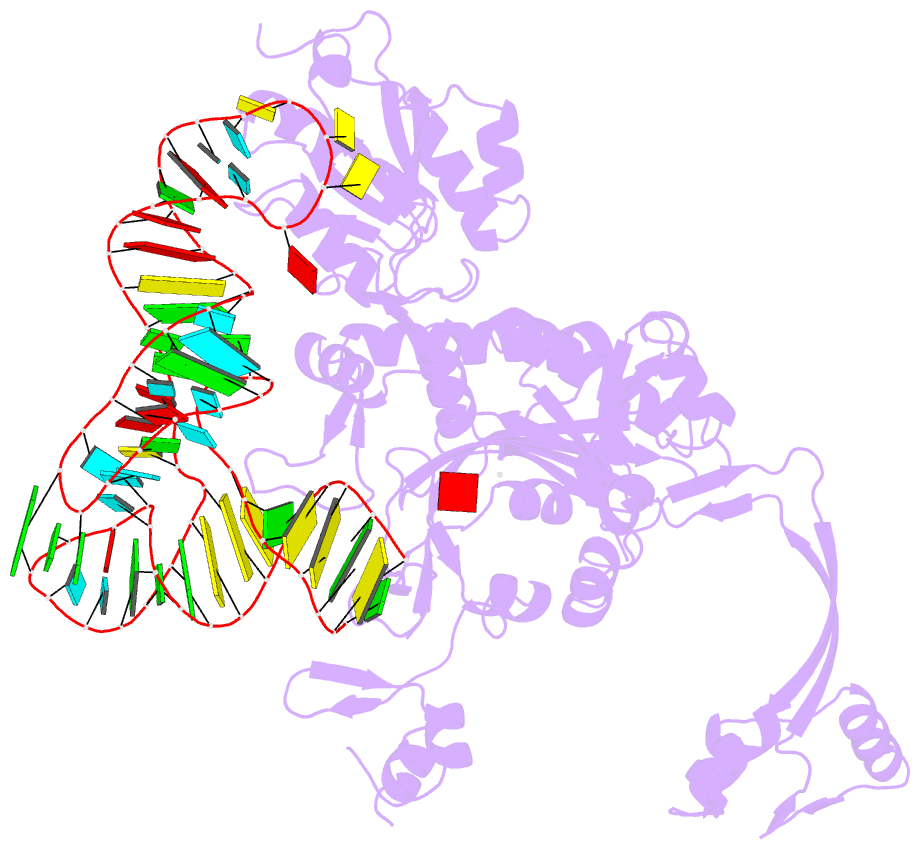Summary information and primary citation
- PDB-id
- 4qei; SNAP-derived features in text and JSON formats;
DNAproDB
- Class
- ligase-RNA
- Method
- X-ray (2.875 Å)
- Summary
- Two distinct conformational states of glyrs captured in crystal lattice
- Reference
- Deng X, Qin X, Chen L, Jia Q, Zhang Y, Zhang Z, Lei D, Ren G, Zhou Z, Wang Z, Li Q, Xie W (2016): "Large Conformational Changes of Insertion 3 in Human Glycyl-tRNA Synthetase (hGlyRS) during Catalysis." J.Biol.Chem., 291, 5740-5752. doi: 10.1074/jbc.M115.679126.
- Abstract
- Glycyl-tRNA synthetase (GlyRS) is the enzyme that covalently links glycine to cognate tRNA for translation. It is of great research interest because of its nonconserved quaternary structures, unique species-specific aminoacylation properties, and noncanonical functions in neurological diseases, but none of these is fully understood. We report two crystal structures of human GlyRS variants, in the free form and in complex with tRNA(Gly) respectively, and reveal new aspects of the glycylation mechanism. We discover that insertion 3 differs considerably in conformation in catalysis and that it acts like a "switch" and fully opens to allow tRNA to bind in a cross-subunit fashion. The flexibility of the protein is supported by molecular dynamics simulation, as well as enzymatic activity assays. The biophysical and biochemical studies suggest that human GlyRS may utilize its flexibility for both the traditional function (regulate tRNA binding) and alternative functions (roles in diseases).





